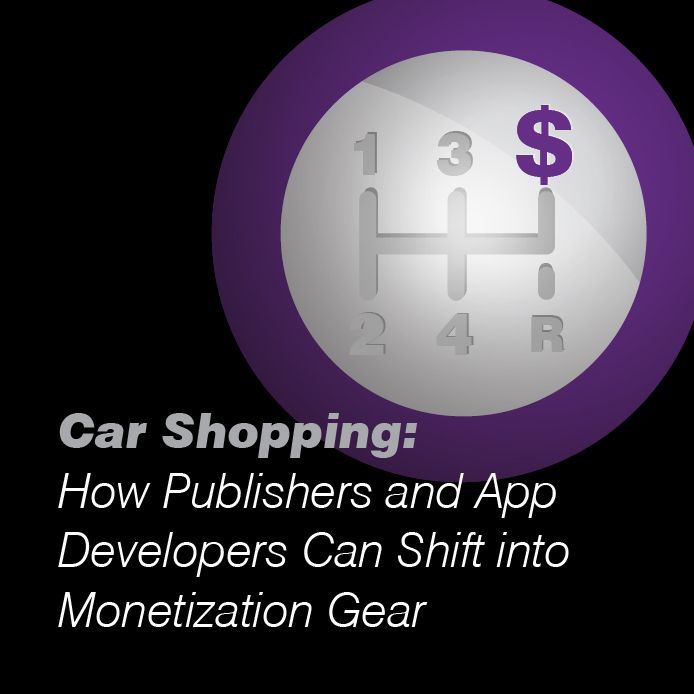By Amy Vale
 The “shop by phone” phenomena isn’t just a U.S. thing; it’s
going international. eMarketer expects U.S. consumers to make nearly $87
billion in mobile purchases by 2016, which is more than 27 percent of all
ecommerce transactions. Meanwhile in the UK, smartphonepenetration is expected to reach 45.5 percent by the end of 2013, with an
increase to 55 percent market share by the end of 2014. And one industry in
particular is ripe to benefit from the increasingly mobile-first tendencies of
consumers – automotive. With the rapid adoption of mobile platforms in the US
and UK, car enthusiasts and shoppers will begin to diversify their mobile usage
whether it’s using their mobile devices when actually inside their cars or
looking to purchase a new car. The Societyof Motor Manufacturers and Traders reported roughly 1.9 million new UK car
registrations were recorded in 2012, preserving the UK car industry from the
greater decline in car sales being seen by many other European countries. With
growing adoption of smartphones and tablets and more drivers hitting the road,
the need for publishers and app developers to be laser-focused and strategic in
their mobile strategies is even greater.
The “shop by phone” phenomena isn’t just a U.S. thing; it’s
going international. eMarketer expects U.S. consumers to make nearly $87
billion in mobile purchases by 2016, which is more than 27 percent of all
ecommerce transactions. Meanwhile in the UK, smartphonepenetration is expected to reach 45.5 percent by the end of 2013, with an
increase to 55 percent market share by the end of 2014. And one industry in
particular is ripe to benefit from the increasingly mobile-first tendencies of
consumers – automotive. With the rapid adoption of mobile platforms in the US
and UK, car enthusiasts and shoppers will begin to diversify their mobile usage
whether it’s using their mobile devices when actually inside their cars or
looking to purchase a new car. The Societyof Motor Manufacturers and Traders reported roughly 1.9 million new UK car
registrations were recorded in 2012, preserving the UK car industry from the
greater decline in car sales being seen by many other European countries. With
growing adoption of smartphones and tablets and more drivers hitting the road,
the need for publishers and app developers to be laser-focused and strategic in
their mobile strategies is even greater.
Target Customers En
Route
It’s so important for app developers to understand (and know
with great certainty) who their target audience is. Are your app users aged 18-24? Do your app
users typically use an iOS or Android device? What are the top DMAs where your
users are located (and making purchase)? Knowing these details is crucial to
ensuring your app doesn’t just become a one-hit wonder and actually creates a
consistent stream of revenue.
With location targeting, apps developers can be more defined
in how, where, and when they’re connecting and engaging with users. Whether
it’s driving mcommcere or increasing the success of loyalty/rewards prgrams,
location targeting can be a tremendous monetization boon for app developers.
Take the navigation app Waze, for example. Waze found that over 50 percent of
users make pit stops while driving, and many search for local services. With
this information, they launched WazeAds to help local businesses target nearby users and send messages to those
who are already searching for services.
Increase Clicks and
Eyeballs with Rich Media
Rich media ads tend to perform well in driving users to
mobile-optimized websites. According to Nielsen’sglobal survey of multi-screen media usage, 74 percent of global respondents
report watching the video via the internet (on any device), up four points
since 2010, and over half of global online consumers (56 percent) watch video
on a mobile phone at least once a month and 28 percent at least once a day.
Tie Social into
Metrics
Researchfrom Nielsen and NMI has surfaced proving something
we’ve known for a while – the most engaged consumers on social networks are
also the ones accessing the platforms on their mobile devices. In fact, 46
percent of social media users use their smartphones to access social media,
while 16 percent do so via tablet devices. To truly see any benefits from this,
publishers and app developers need to tier out their monetization strategies
into short, medium and long term, and identify how to measure that effectively.

Really very informative .....keep sharing.
ReplyDeletemobile phone shop